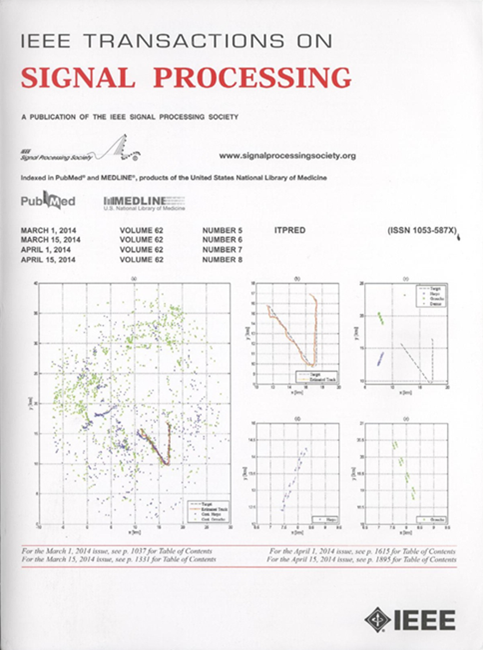含高斯噪声和脉冲噪声的盲均衡快速收敛算法
IF 4.6
2区 工程技术
Q1 ENGINEERING, ELECTRICAL & ELECTRONIC
引用次数: 0
摘要
针对高斯噪声和脉冲噪声环境下高吞吐量正交调幅信号的色散无线通信系统,提出了一种盲均衡算法。建立了一种将模匹配误差函数与负高斯核函数相结合的代价函数,以有效地获得与盲均衡器相关的权向量。给出了这种新型代价函数的一些较好的性质。大量研究表明,所提出的代价函数有效地降低了模量失配误差引起的失调,有效地抑制了大误差带来的负面影响。此外,为了快速搜索出最优权向量,提出了一种有效的逐次逼近最小化所建立的代价函数的方法。重要的是,证明了所提出的逐次逼近方法具有超线性收敛性。最后,通过大量的仿真验证了所提出的盲均衡器在高斯噪声和脉冲噪声环境下的均衡质量和均衡效率均优于现有方法。本文章由计算机程序翻译,如有差异,请以英文原文为准。
Fast Converging Algorithm for Blind Equalization With Gaussian and Impulsive Noises
This paper proposes a blind equalization algorithm for dispersive wireless communication systems that employ high throughput quadrature amplitude modulation signals under both Gaussian and impulsive noise environments. A novel cost function that combines the modulus match error function with the negative Gaussian kernel function is established to efficiently obtain the weight vector associated with the blind equalizer. Some preferable properties of the novel cost function are presented. Intensive studies show that the proposed cost function efficiently reduces the maladjustment caused by the modulus mismatch error and efficiently suppresses the negative influence resulting from large errors. Moreover, an efficient successive approximation method for minimizing the established cost function is proposed for fast searching of the optimal weight vector. Very importantly, it is proved that the proposed successive approximation method possesses superlinear convergence. Finally, extensive simulations are provided to demonstrate that the proposed blind equalizer has better performances than the existing methods under both Gaussian and impulsive noise circumstances in terms of equalization quality and equalization efficiency.
求助全文
通过发布文献求助,成功后即可免费获取论文全文。
去求助
来源期刊

IEEE Transactions on Signal Processing
工程技术-工程:电子与电气
CiteScore
11.20
自引率
9.30%
发文量
310
审稿时长
3.0 months
期刊介绍:
The IEEE Transactions on Signal Processing covers novel theory, algorithms, performance analyses and applications of techniques for the processing, understanding, learning, retrieval, mining, and extraction of information from signals. The term “signal” includes, among others, audio, video, speech, image, communication, geophysical, sonar, radar, medical and musical signals. Examples of topics of interest include, but are not limited to, information processing and the theory and application of filtering, coding, transmitting, estimating, detecting, analyzing, recognizing, synthesizing, recording, and reproducing signals.
 求助内容:
求助内容: 应助结果提醒方式:
应助结果提醒方式:


